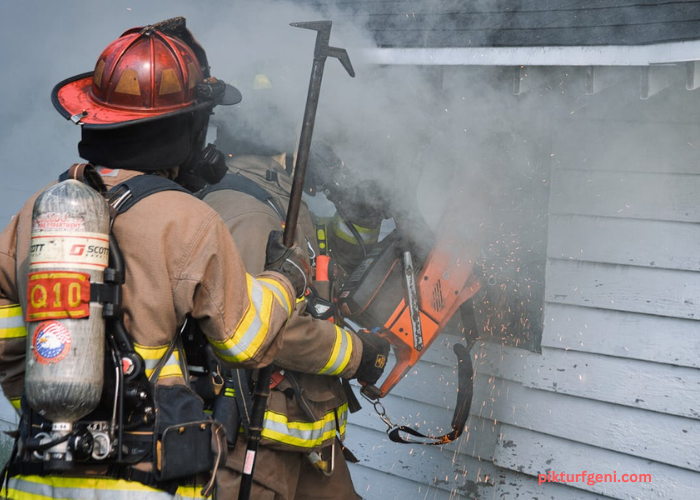Aqueous film-forming foam (AFFF) has long been hailed as a crucial tool in fighting flammable liquid fires. However, its environmental fallout has become increasingly evident, with reports of AFFF contamination emerging across various communities.
As the repercussions of AFFF use continue to unfold, individuals, businesses, and local governments find themselves navigating a complex legal landscape. Understanding the legal considerations in the aftermath of AFFF contamination is paramount for affected parties seeking recourse, accountability, and mitigation strategies.
In this article, we will dive into the legal considerations surrounding AFFF contamination, including liability, remedies, and community advocacy efforts.
Understanding AFFF Contamination
AFFF contamination arises from the use of firefighting foam containing per- and polyfluoroalkyl substances (PFAS), which are highly persistent and bioaccumulative chemicals. According to Earth911, an estimated 200 million Americans have been exposed to PFAS via tap water.
These substances can leach into the environment, contaminating soil and groundwater, and pose significant health risks to humans and wildlife.
Understanding the extent of contamination requires comprehensive environmental assessments, including sampling and testing of water sources, soil, and sediment. Collaborating with environmental agencies and experts is crucial to accurately assess the scope of contamination and its potential impact on affected communities.
Once the extent of contamination is understood, appropriate remediation strategies can be developed to mitigate its effects and protect public health and the environment.
Identifying Responsible Parties
Identifying responsible parties for AFFF contamination can be challenging due to the involvement of multiple stakeholders. Potentially liable parties may include manufacturers of AFFF products, firefighting agencies, military installations, airports, industrial facilities, and municipal fire departments.
Determining liability often requires legal expertise and thorough investigation to establish causation and negligence.
Additionally, regulatory bodies that oversee AFFF usage and environmental protection may also bear responsibility for inadequate oversight or regulation. Working with experienced environmental attorneys can help affected parties navigate the complexities of determining liability and pursuing legal recourse effectively.
Assessing Legal Remedies
When facing the aftermath of contamination, affected parties have various legal remedies at their disposal. These may include filing an AFFF lawsuit against manufacturers of firefighting foam products for product liability, negligence, or failure to warn. Class action litigation can also be pursued to aggregate claims from multiple affected individuals or entities.
According to a March 2024 update from the Lawsuit Information Center, 176 new lawsuits have been added to the AFFF class action litigation. This brings the total count of pending AFFF cases to over 7000.
TorHoerman Law notes that seeking legal counsel specializing in environmental law is essential to assess the viability of legal claims. It also helps determine the most effective course of action for seeking compensation and remediation. By exploring all available legal remedies, affected parties can pursue justice and hold those responsible for AFFF contamination accountable.
Navigating Regulatory Compliance
Navigating regulatory compliance in the aftermath of AFFF contamination requires adherence to federal, state, and local environmental regulations. This may involve reporting contamination incidents to regulatory agencies, complying with cleanup and remediation requirements, and implementing measures to prevent further environmental harm.
Engaging with regulatory authorities and environmental consultants can help ensure compliance with applicable laws and regulations while mitigating legal risks. By proactively addressing regulatory compliance, affected parties can demonstrate their commitment to environmental stewardship and protect themselves from potential legal consequences.
Seeking Compensation and Damages
Affected parties may be entitled to seek compensation for damages resulting from AFFF contamination. This can include property damage, diminished property value, medical expenses for healthcare related to exposure, loss of business revenue, and other economic losses.
According to LezDo TechMed, attorneys have estimated plaintiffs with a strong case can expect settlements in the range of $200,000 to $500,000. Others can expect compensation in the range of $150,000 to $300,000.
Pursuing compensation may involve negotiation with responsible parties, filing insurance claims, or pursuing legal action to recover damages and hold responsible parties accountable. By seeking compensation and damages, affected parties can recover losses incurred due to AFFF contamination and alleviate the financial burdens associated with remediation efforts.
Engaging in Community Advocacy
Community advocacy plays a vital role in raising awareness about AFFF contamination, mobilizing support for affected communities, and pressuring responsible parties to take action. Engaging with local stakeholders, environmental organizations, and advocacy groups can amplify the voices of affected individuals and communities.
Community advocacy efforts may include organizing public meetings, petitioning government officials for regulatory reforms, and advocating for remediation efforts to address AFFF contamination effectively. By actively participating in community advocacy, affected parties can contribute to collective efforts to address AFFF contamination and protect public health and the environment.
FAQs
What is the lifespan of AFFF foam?
The lifespan of AFFF foam depends on storage conditions and usage frequency. Typically, when stored properly and not exposed to extreme conditions, AFFF foam can maintain its effectiveness for several years.
What are the cancerous compounds in AFFF?
Per- and polyfluoroalkyl substances (PFAS) found in AFFF foam include perfluorooctanoic acid (PFOA) and perfluorooctane sulfonate (PFOS). Prolonged exposure to these compounds has been linked to an increased risk of developing various cancers among exposed individuals.
What is the difference between foam and AFFF?
Foam is a general term for firefighting agents that suppress fires by smothering them. AFFF is a specific type of foam containing fluorinated surfactants designed to create a thin film on flammable liquids, effectively suppressing fires.
In summary, the legal considerations surrounding AFFF contamination underscore the complexity and urgency of addressing its environmental and public health impacts. From identifying responsible parties to seeking compensation and engaging in community advocacy, affected individuals and entities must navigate a challenging landscape.
Collaboration between stakeholders, including legal experts, regulatory bodies, and grassroots organizations, is essential for effective remediation and accountability. As awareness grows and litigation progresses, proactive measures and collective action are imperative to mitigate future harm and ensure justice for affected communities.
Through concerted efforts, we can strive towards a safer, more resilient future in the wake of AFFF contamination.
